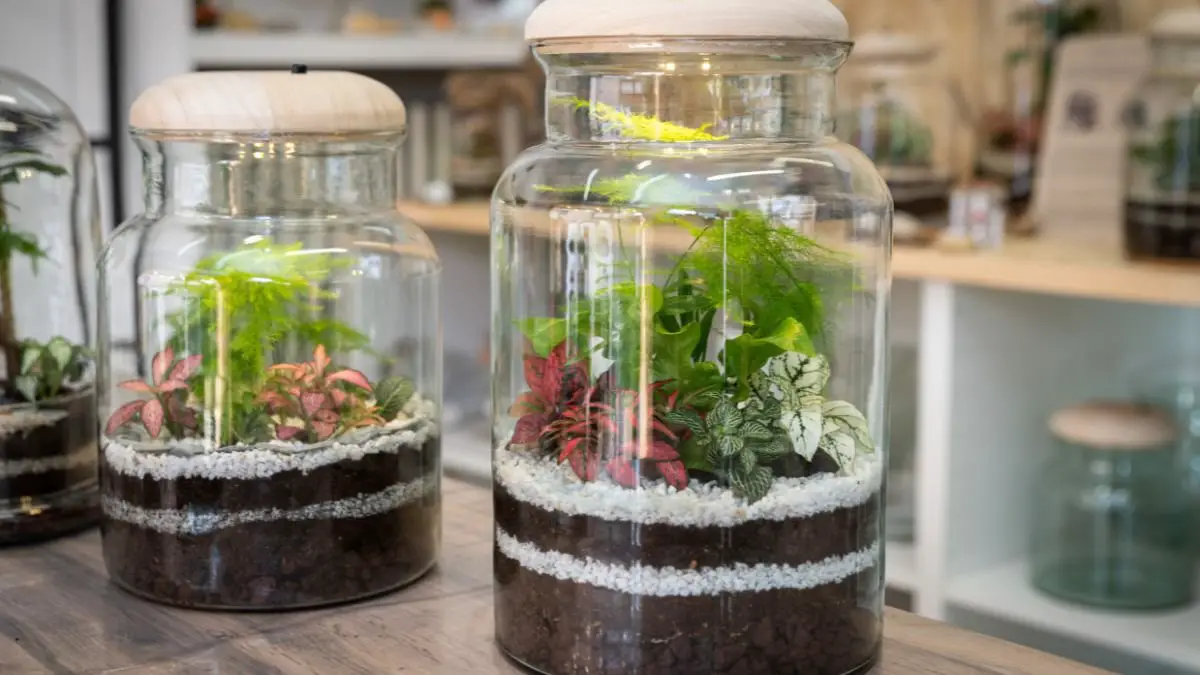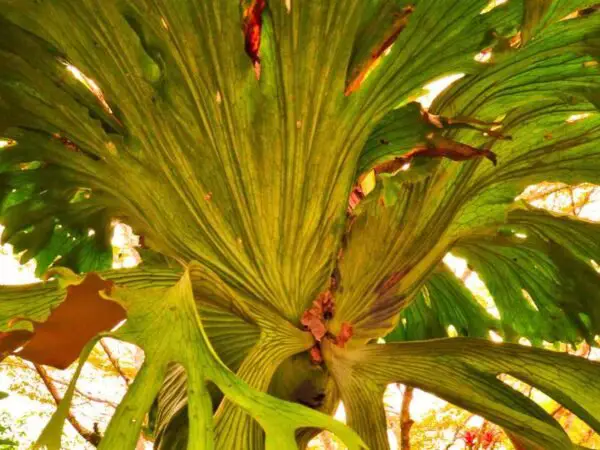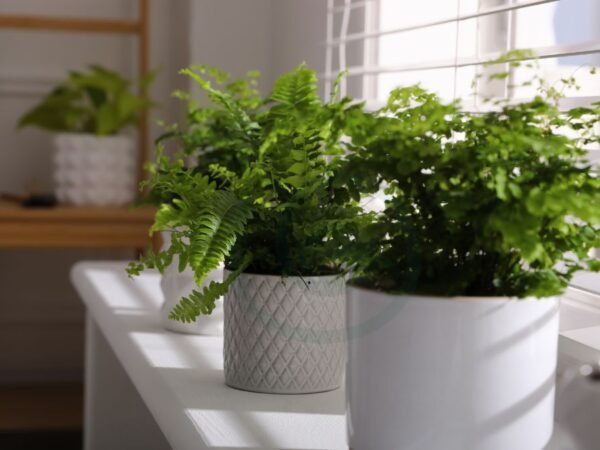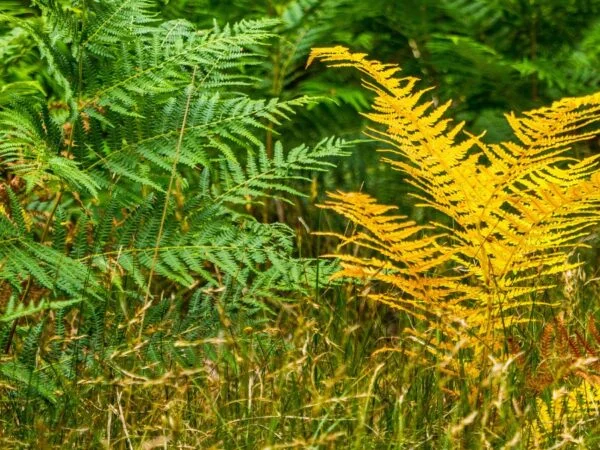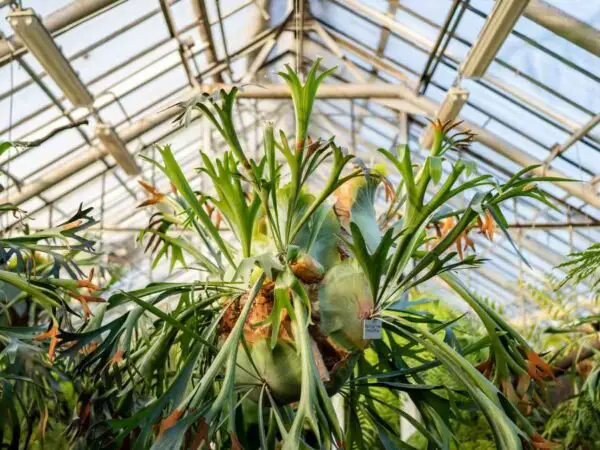When it comes to creating a captivating indoor oasis inside a container, choosing the best closed terrarium plants is key. These lush green companions not only add a touch of nature to your living space but also require minimal maintenance. From the historical perspective of Victorian-era Wardian cases to modern-day glass containers, closed terrariums have a rich botanical history. By selecting the right plants, such as ferns, fittonias, and mosses, you can craft a self-sustaining ecosystem that thrives in its enclosed environment.
Key Takeaways
- Choose plants with ideal traits like compact growth, low maintenance, and humidity tolerance for a successful closed terrarium.
- Opt for the best terrarium plants such as Fittonia, Pilea, and Peperomia for varied textures and colors in your enclosed garden.
- Incorporate ferns like Maidenhair and Button Ferns for a lush and tropical look within your terrarium setup.
- Introduce vines like Creeping Fig and English Ivy to add vertical interest and cascading greenery in your closed terrarium.
- Select foliage plants such as Baby's Tears and Polka Dot Plants to create a vibrant and visually appealing terrarium display.
- Ensure proper airflow within the terrarium to prevent mold growth and maintain a healthy environment for your plants.
Ideal Plant Traits
Low Maintenance
Choose plants that need little care and can survive with minimal attention. Opt for varieties that can thrive even with infrequent watering. Select plants that are resilient to changing environmental conditions.
Humidity Love
Look for plants that flourish in environments with high humidity levels. Choose plants that prefer consistent moisture and can adapt well to humid conditions. Opt for species that can thrive in the moist terrarium environment.
Compact Growth
Select plants with a compact growth habit, suitable for limited space within the terrarium. Choose varieties that remain small and do not quickly outgrow the enclosure. Opt for plants that are ideal for maintaining a small size within the terrarium.
Best Terrarium Plants
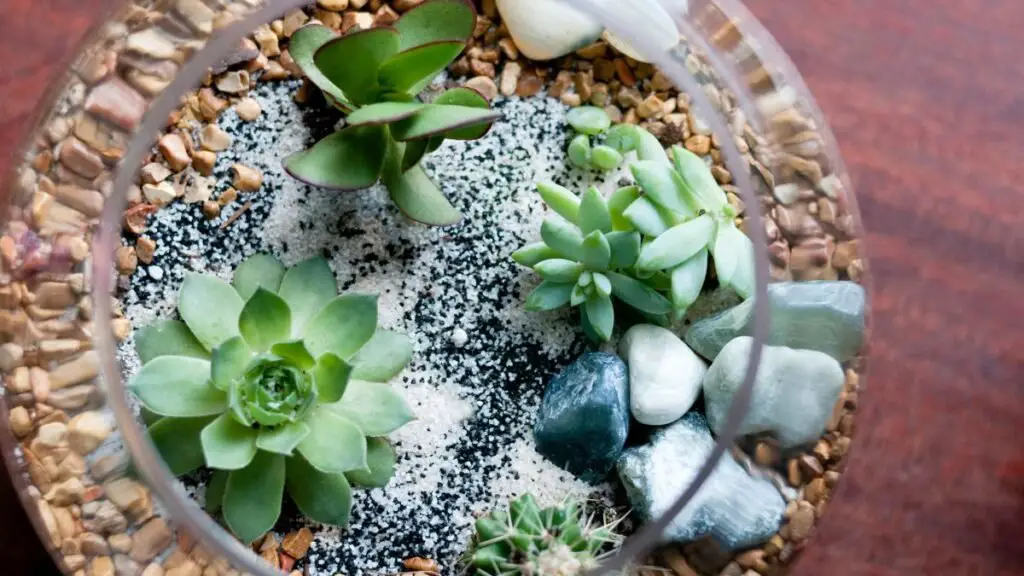
Fern Varieties
Ferns are versatile closed terrarium plants that offer a wide range of textures and colors. They can thrive in the humid, enclosed environment of a terrarium. Choose fern species that complement each other in terms of growth habits to create a harmonious terrarium ecosystem.
- Some popular fern varieties for closed terrariums include Maidenhair Fern, Rabbit's Foot Fern, and Bird's Nest Fern.
- Ferns like the Maidenhair Fern have delicate, lacy foliage that adds an elegant touch to the terrarium.
- Opt for ferns with different leaf shapes and sizes to add visual interest and depth to your terrarium setup.
Vine Selections
Vine plants are excellent choices for closed terrariums as they can trail or climb within the limited space. These plants add a dynamic and lush element to the terrarium environment. Select plant vine species that can thrive in low light conditions typical of closed terrariums.
- Consider vine plants such as Pothos, English Ivy, and String of Pearls for their trailing or climbing abilities.
- Vines like String of Pearls, a plant, feature unique spherical leaves that create a visually appealing look in the terrarium.
- Opt for vines with varying shades of green to introduce color diversity into your closed terrarium display.
Foliage Types
When selecting foliage plants for closed terrariums, opt for species with unique leaf shapes and patterns. These plants not only enhance the aesthetic appeal but also contribute to the overall balance within the terrarium. Choose foliage types that thrive well in high humidity environments.
- Explore foliage plants like Fittonia, Peperomia, and Prayer Plant known for their striking leaf patterns.
- Foliage plants such as Peperomia come in various colors like red, green, and silver, adding vibrancy to the terrarium.
- Consider mixing different foliage types to create a visually stimulating and diverse plant arrangement in your closed terrarium.
Ferns for Terrariums
Nephrolepis
Nephrolepis ferns are known for their lush foliage and easy maintenance, making them ideal for closed terrariums. These ferns thrive in humid environments with indirect light.
When caring for Nephrolepis ferns, ensure the soil remains moist but not waterlogged. Regular misting can help maintain the necessary humidity levels within the closed terrarium setup.
Several varieties of Nephrolepis ferns, such as the Boston Fern and Kimberly Queen Fern, are popular choices for closed terrariums due to their adaptability to different conditions.
Including Nephrolepis ferns in a closed terrarium ecosystem can help regulate moisture levels and provide a lush green backdrop for other plants.
Adiantum
Adiantum ferns, also known as Maidenhair ferns, add a delicate and graceful touch to terrarium setups. These ferns require moderate humidity and indirect light to thrive.
Caring for Adiantum ferns involves ensuring the soil is well-draining to prevent root rot. Regular watering and maintaining adequate humidity levels are essential for their health.
Various species of Adiantum, such as Adiantum raddianum and Adiantum capillus-veneris, are well-suited for closed terrarium environments due to their compact growth habits.
The beauty of Adiantum ferns lies in their delicate fronds that sway gently in the terrarium, adding a touch of elegance to the overall composition.
Pteris
Pteris ferns boast unique features like variegated leaves and striking patterns, making them standout additions to closed terrarium displays. These ferns prefer bright, indirect light.
To cultivate Pteris ferns successfully in a terrarium, ensure good air circulation and avoid overcrowding to prevent fungal issues. Maintain consistency in watering without allowing water to stagnate.
The visual appeal of Pteris ferns lies in their vibrant foliage that can create focal points within a closed terrarium setting. Their growth patterns add depth and interest to the overall aesthetic.
Including Pteris ferns in a closed terrarium setup can elevate the visual appeal and introduce dynamic textures that enhance the overall diversity of plant life within the enclosed environment.
Vines for Terrariums
Pilea
Pilea plants, known for their unique circular leaves, are excellent choices for closed terrariums. These plants boast rapid growth rates, making them ideal for filling up terrarium spaces quickly. The various Pilea species, such as Pilea peperomioides and Pilea involucrata, offer diverse leaf shapes and colors that add visual interest to terrarium setups. To care for Pilea plants in terrariums, ensure they receive indirect sunlight and maintain adequate humidity levels by misting regularly.
Ficus
Ficus plants bring elegance and versatility to terrarium designs with their glossy leaves and striking appearance. Varieties like Ficus lyrata and Ficus pumila thrive in the humid environment of closed terrariums. These plants can be creatively incorporated into terrarium layouts by using them as focal points or adding height to the overall composition. When caring for Ficus plants in terrariums, provide them with consistent moisture levels and occasional pruning to maintain their shape.
Peperomia
Peperomia plants offer a wide range of charming options for terrarium enthusiasts, from the trailing Peperomia prostrata to the colorful Peperomia caperata. Their varied leaf shapes and hues make them stand out in closed terrarium settings, adding visual appeal to the miniature landscape. With low-maintenance care requirements, Peperomia plants are perfect for beginners looking to create thriving terrarium displays. Ensure these plants receive indirect light and moderate watering to keep them healthy inside the enclosed environment.
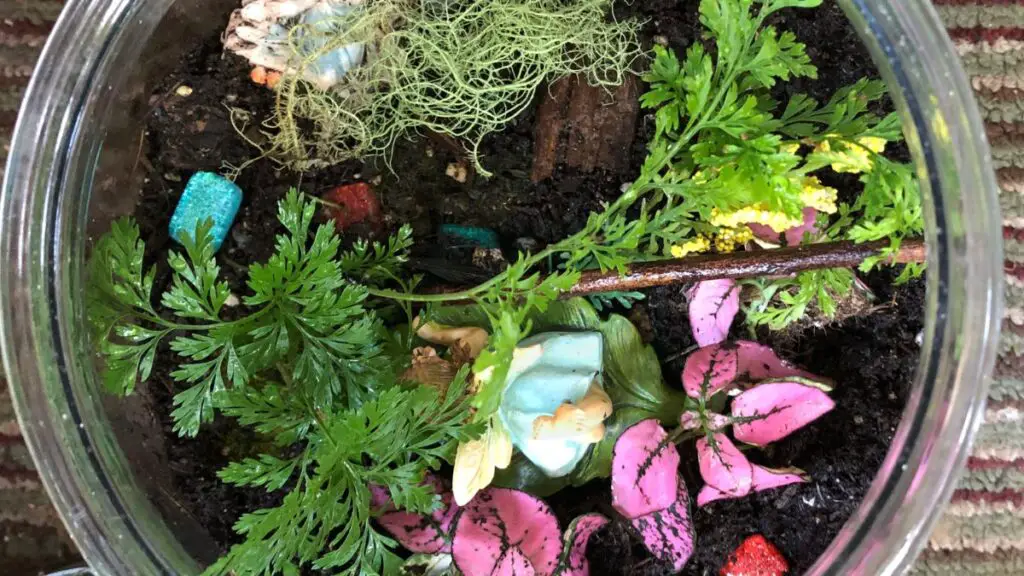
Foliage for Terrariums
Begonia
Begonias offer vibrant colors and textures ideal for terrariums, adding a lively touch to the enclosed environment. Different Begonia species thrive in humid terrarium settings, making them a perfect choice for such conditions. Showcase Begonias creatively in your closed terrarium setup to enhance its visual appeal.
Fittonia
Fittonia plants boast striking foliage patterns and colors that can captivate attention within a terrarium setting. Understanding the specific light and moisture requirements of Fittonia plants is crucial for their successful growth in terrariums. By incorporating Fittonia plants, you can introduce a pop of color and visual interest to your closed terrarium design.
Maranta
Maranta plants are known for their unique leaf movements and intricate patterns, adding a dynamic element to any terrarium display. Various Maranta varieties are suitable for closed terrariums, each offering distinct characteristics. Incorporating Maranta plants in your terrarium can bring an element of elegance and subtle movement, enhancing the overall aesthetic.
Airflow Importance
Health and Growth
Maintaining proper airflow is crucial for the health of your closed terrarium plants. Healthy plants exhibit vibrant colors, firm leaves, and no signs of wilting or yellowing. To promote optimal growth, ensure adequate ventilation by opening the lid occasionally to allow fresh air circulation.
In closed terrariums, issues such as mold growth or plant rot can arise due to poor airflow. Address these problems by adjusting the lid's position to regulate humidity levels. Regularly check for any signs of distress in your plants, such as browning leaves or stunted growth, which indicate a lack of proper ventilation.
Plant Selection Guide
When selecting plants for your closed terrarium, consider species that thrive in high humidity environments with minimal airflow. Opt for varieties like ferns, mosses, and small leafy plants that can adapt well to the enclosed conditions. Ensure these plants are suitable for low light levels typical of terrarium settings.
Key factors to consider include the plant's size at maturity, growth rate, and light requirements. Choose plants that complement each other in terms of size and care needs to create a balanced ecosystem within your terrarium. Here are some recommended plants based on different terrarium conditions:
- For high-humidity environments: Fittonia, Pilea, Peperomia
- Low-light tolerant options: Mosses, Ferns, Selaginella
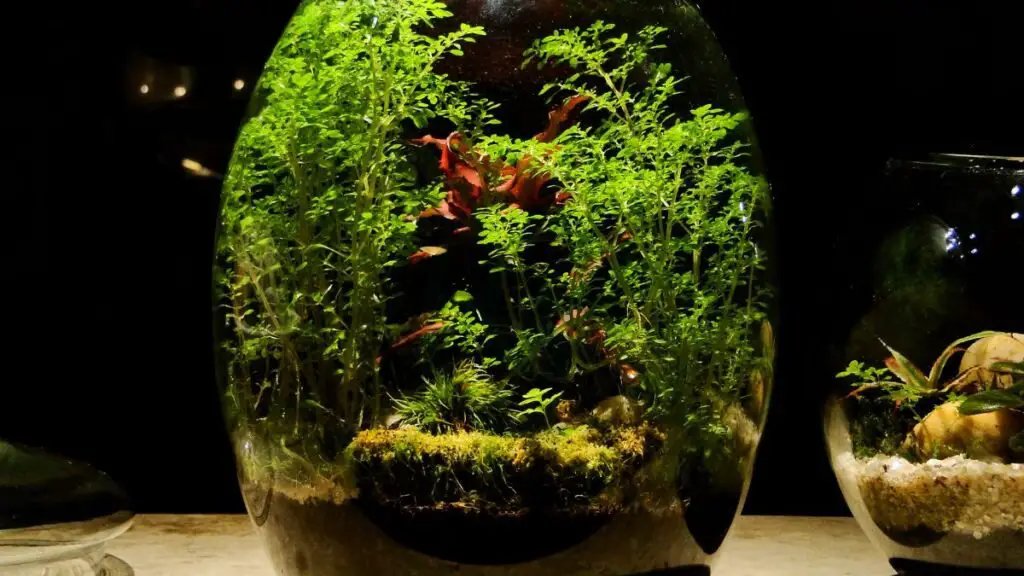
Where to Buy Plants
Online Options
When looking for many plants for your closed terrarium, consider shopping online. Websites like Amazon, Etsy, and The Sill offer a wide variety of terrarium plants. These platforms provide convenience and the ability to browse through numerous options from the comfort of your home.
Local Nurseries
For those who prefer a more hands-on approach, visiting local nurseries is a great way to shop for many plants. Nurseries often have knowledgeable staff who can guide you in selecting the perfect plants for your closed terrarium. You can inspect the plants in person to ensure they are healthy and free from pests.
Tips for Selecting Healthy Plants
- Look for shop that specialize in indoor plants or terrariums.
- Choose plants with vibrant green leaves and no signs of discoloration or wilting.
- Check the roots of the plant to ensure they are not overcrowded in their container.
- Avoid plants with yellow or brown leaves, as this may indicate poor health.
- Consider purchasing plants that have similar care requirements to make maintenance easier.
Over to You
Share Experience
Have you ever cultivated closed terrarium plants? Share your insights and tips in the comments below. Discuss the benefits and challenges you have encountered while maintaining a closed terrarium.
Favorite Plants
What are your preferred plants for closed terrariums, and why do they thrive in such environments? Consider factors like humidity tolerance, growth patterns, and visual appeal when selecting your favorite terrarium plants.
Seeking Advice
Do you need guidance on caring for specific plants in closed terrariums? Feel free to ask questions about light requirements, watering schedules, or any other concerns you may have. Engage with the community to enhance your terrarium gardening skills.
Terrarium Plant FAQ
Common Issues
Why are my terrarium plants turning yellow?
Yellowing leaves in terrarium plants can be due to overwatering, lack of sunlight, or poor drainage. Ensure proper watering and adequate light exposure to prevent this issue.
How do I prevent mold in my closed terrarium?
To prevent mold growth, ensure proper ventilation by opening the lid occasionally. Also, avoid overwatering and maintain a balance of moisture within the terrarium.
Maintenance Tips
What is the best way to prune terrarium plants?
When pruning terrarium plants, use clean, sharp scissors to trim dead or overgrown parts. Regular pruning helps maintain plant health and promotes new growth.
How often should I fertilize my closed terrarium plants?
Fertilize closed terrarium plants sparingly, about once every 6 months with a diluted liquid fertilizer. Over-fertilizing can harm the delicate ecosystem inside the terrarium.
Expert Advice
What are some ideal plants for a closed terrarium environment?
Ideal plants for closed terrariums include fern species, peperomia varieties, and fittonia. These plants thrive in high humidity and low-light conditions typical of closed terrariums.
Any tips for creating a balanced ecosystem in a closed terrarium?
To maintain a balanced ecosystem, choose plants with similar care requirements and growth rates. Monitor moisture levels regularly and adjust watering accordingly.
Closing Thoughts
In creating your closed terrarium, remember to choose plants that thrive in humid environments. Ferns, vines, and foliage plants are excellent choices to bring your mini ecosystem to life. Ensure proper airflow to prevent mold growth and maintain a healthy terrarium. Consider purchasing your plants from reputable sources to guarantee quality. Now, armed with knowledge about the best closed terrarium plants, it's time for you to get creative and build your green oasis!
Frequently Asked Questions
Which plants are ideal for a closed terrarium environment?
Closed terrariums thrive with plants that can tolerate high humidity levels and low light conditions. Ideal plants include ferns, mosses, fittonias, nerve plants, and air plants.
How do I ensure proper airflow in a closed terrarium?
Proper airflow is crucial in a closed terrarium to prevent mold growth. Place the terrarium in a well-ventilated area with indirect sunlight. Open the lid occasionally to allow fresh air circulation.
Can I buy terrarium plants online?
Yes, you can purchase terrarium plants online from reputable nurseries or specialized plant shops. Ensure the seller offers healthy plants suitable for enclosed environments like terrariums.
Do ferns make good choices for terrariums?
Ferns are excellent choices for terrariums due to their love for humidity and shade. They add lush greenery and texture to the enclosed environment, creating a beautiful miniature ecosystem.
What are some popular vines suited for closed terrariums?
Popular vines for closed terrariums include pothos, ivy, and creeping fig. These vines not only add vertical interest but also help fill up space within the limited confines of a terrarium.
Image Source: Paid image from CANVA

